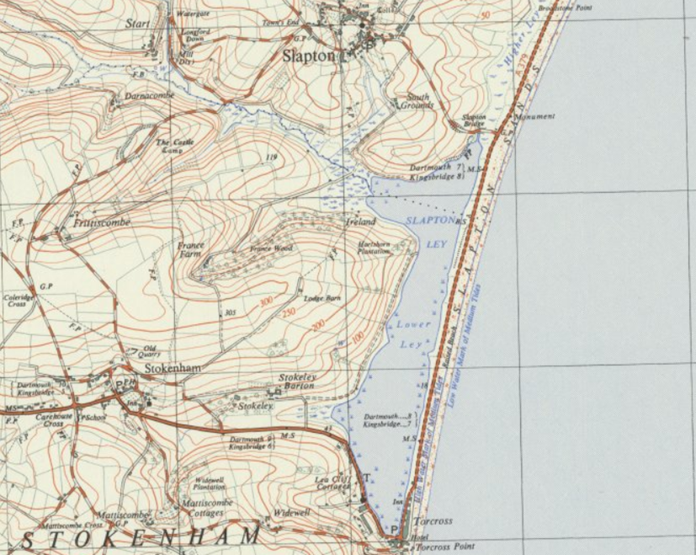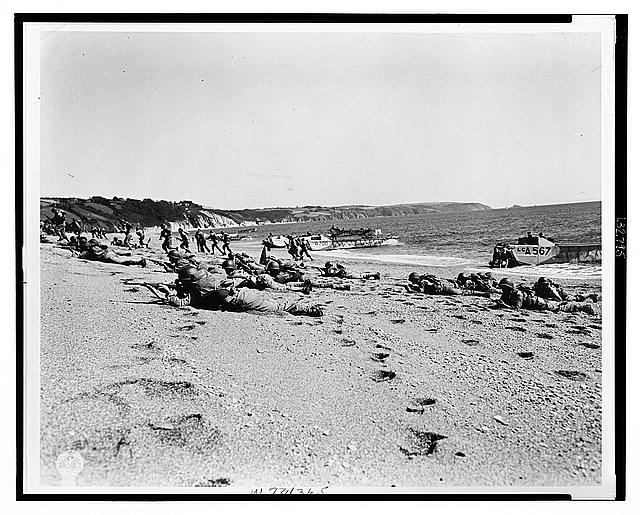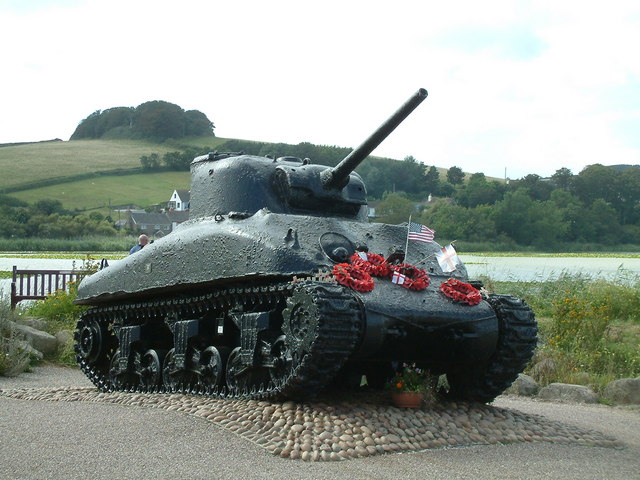Once the Allies decided to land in Normandy, they identified the need to practice. The event itself would bring together the air, army and navy forces, as well as different allies in an unprecedented logistical exercise against a determined enemy. In December 1943, 3,000 people were cleared from an area of 30,000 acres in South Devon (amongst other places) so that the Allies could train in preparation. Many of the soldiers had no combat experience, so a series of exercises were planned to acclimatise the men to battle conditions.

A duck, beaver, fox and tiger
In early 1944 there were several rehearsals along this coastline – Operation Duck, Operation Beaver and Operation Fox. The next one, Operation Tiger would be an almost full dress-rehearsal at Slapton Sands involving 30,000 men. That stretch of coast, with its steep shingle beaches was topographically similar to one of the areas where the Americans planned to land on D-Day, codenamed Utah Beach. The practice would begin with a bombardment of the shore on 27 April, after which the first men would disembark on the beach. This would use live ammunition so that the men would be better prepared for the experience on D-Day.
Then LS(T)s (Tank-landing ships) would land men and military supplies onto the beach. These were large ships, capable of carrying men, tanks and lorries, and weighed around 4,800 tonnes. However, they had little defensive firepower of their own and were slow-moving, depending on escorts to defend them. In Operation Tiger a flotilla of 8 ships would be escorted by a Royal Naval destroyer and a corvette.

German E-boats (so called by the British because ‘E’ stood for ‘enemy’) regularly patrolled the English Channel. These could travel up to 40 knots per hour, around 3 times faster than the LS(T)s. The Allies needed to protect not just the men and ships in the exercise, but the knowledge of the invasion practice area. If the Germans recognised it was being used for that purpose, the intended landing site in France would be identifiable and the element of surprise would be gone. That would inevitably mean higher casualties.
Operation Tiger
From the start of Operation Tiger, the exercise was a tragedy of errors. The Royal Navy changed their radio frequency and the Americans were not given the updated details. Several of the Landing Craft Tanks, LC(T), small tank-carrying ships with flat bottoms to assist disembarkation, were running behind schedule. The exercise commander, American Rear-Admiral Don Moon, therefore delayed the start of the exercise by an hour, but this decision did not reach all parties. When the men from these craft landed 110 were killed by friendly fire.

The Destroyer, HMS Scimitar, had been rammed by an American craft that morning and remained in Plymouth for repairs. This information was not conveyed until after the convoy had departed. This left the 8-boat flotilla protected by a single corvette, with much less firepower. Another destroyer was despatched, but not until 1:30am on 28 April. It would take them at least an hour to reach the LS(T)s.

Meanwhile, a group of 9 E-boats had spotted the convoy. They maintained radio silence as they approached, in order not to alert the allied ships to their presence. The first torpedo struck one of the LS(T)s at 2:30am on 28 April.
Over the following 3 hours 3 American ships were hit, 2 of which sank and another of which suffered extensive damage. Men jumped into the cold waters of the English Channel. There were insufficient working life rafts. Many men did not know how to use their inflatable life jackets, and wore them wrongly round their waist rather than shoulders. This pushed their heads underwater and they drowned. In areas the sea was covered with fuel which caught fire. Some men died of hypothermia or burns.
The shore batteries could not fire on the E-boats, as to do so would kill the men in the water and reveal that the stretch of coastline was protected, and thus being used for invasion practice. The corvette tried to attack the E-boats but inflicted no casualties.
How did it all go so wrong?
The very complexity of planning for D-Day meant that commanders in the field were sometimes overwhelmed by a vast amount of constantly changing information. At the same time as Operation Tiger was preparing to start, those in charge were being given the final plans for D–Day. However, the failure to pass down the radio frequency changes and the status of HMS Scimitar were critical.
Aftermath
An estimated 749 American servicemen died in Operation Tiger. The clean-up exercise was conducted in secrecy both for the purposes of security and in order not to destroy morale. Among the bodies not initially recovered were those of 10 men with the highest security clearance (codenamed ‘Bigot’) who had copies of the detailed plans for the D-Day operation. If their bodies with the plans were found by the Germans, they would know when and where the invasion would take place. The Allies considered calling off D-Day on this basis, but the bodies were all found.

The Allies learnt some valuable but expensive lessons from Operation Tiger. Radio frequencies were standardised. Men were taught how to use their life jackets – the date of the exercise was too close to D-Day to replace them. American casualties at Utah Beach on D-Day (197 including 60 missing) were low in comparison to some of the other areas, and considerably lighter than at Slapton Sands.
- keep tabs on the past: sign up for our email alerts
- follow our Foreign & Commonwealth Historians on Twitter @FCOHistorians